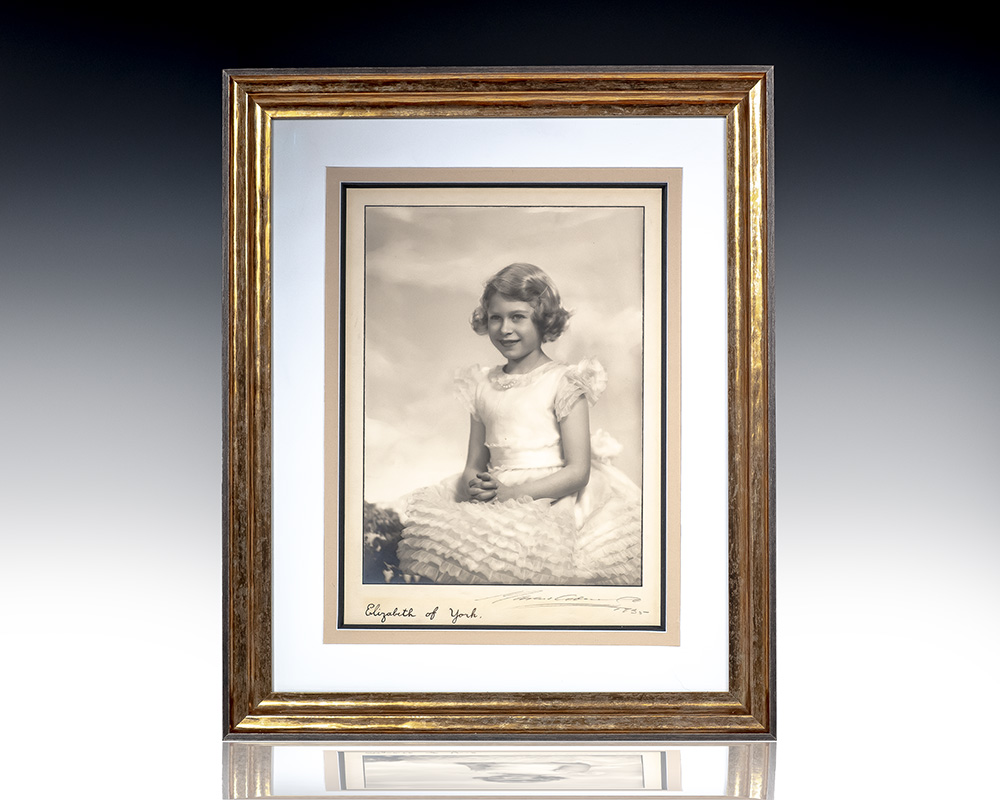Queen Elizabeth II Hand-Drawn and -Colored Christmas Card
Queen Elizabeth II Hand-Drawn and -Colored Christmas Card Signed to Her Governess, Marion Crawford
Queen Elizabeth II Hand-Drawn and -Colored Christmas Card
QUEEN ELIZABETH II,.
$22,500.00
Item Number: 145365
Queen Elizabeth II hand-drawn and colored Christmas card signed to her governess, Marion Crawford. One page, folded, illustrated with a Christmas tree traced and colored with crayon and a golden horseshoe wrapped in holly, the card reads, “To Crawfie From Lilibet.” Elizabeth was given the nickname, ‘Lilibet,’ which was used primarily by her immediate family members with the exception of her nanny and tutor, Marion Crawford. Crawford served the royal household from 1932 to 1947 but allegedly fell out of favor with the family after the release of her memoir, ‘The Little Princess: The Story of the Queen’s Childhood by Her Nanny, Marion Crawford.’ Once honored as a Commander of the Royal Victorian Order, Crawford was later disparaged by the press and shunned by the royal family for breach of privacy. It’s said that Crawford was never forgiven for her book and, for generations, ‘doing a Crawfie’ became royal shorthand for indiscretions. Despite the negative backlash against her, Crawford saved a collection of mementos from her years of royal duty, which she bequeathed to the Queen and the family of her lawyer after her death in 1988. Among these items were a set of hand-made cards inscribed from Elizabeth and Margaret, of which this is one. In near fine condition with light very toning. The piece measures 10 inches by 4 inches when open. An extraordinarily unique item.
The longest-serving and longest-lived British monarch, Elizabeth II was Queen of the United Kingdom, Canada, Australia, and New Zealand from 6 February 1952 to 8 September 2022. She ascended the throne at the age of 25, upon the death of her father, King George VI, on 6 February 1952, and was proclaimed queen by her various privy and executive councils shortly afterwards. The coronation took place more than a year later on June 2, 1953 because of the tradition that holding such a festival is inappropriate during the period of mourning that follows the death of a monarch.







